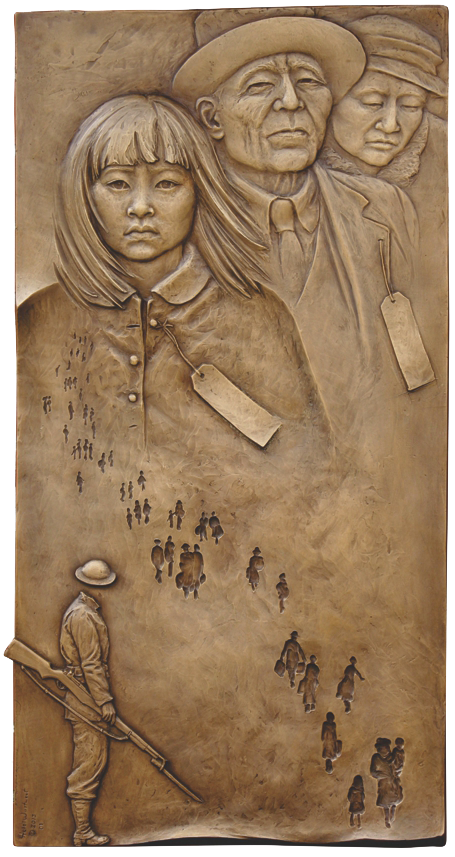
JAP-AM INTERNMENT
The core of this story comes from the Pacific Northwest. The first wave of Japanese-Americans was taken away at gun point from Bainbridge Island, WA, by ferry to Seattle. They were then scattered to internment camps across the country. Soon others followed. Over 110,000 people were held in 10 different camps for nearly 4 years. Incredibly, some of the young Japanese-American men went to fight and die in the war for the same country that imprisoned their families.
I'm outraged that I did not learn about this part of history in school. It was not until I moved to Seattle as an adult that I became aware and that is what motivated me to create this sculpture - a responsibility to make it more visible.
Research revealed to me examples of unbelievable human perseverance and injustice. I was particularly inspired by photographs taken on the day, in 1942, that these Bainbridge citizens were taken away. They were impeccably dressed and appeared amazingly calm. Sympathetic neighbors gathered for sad farewells. Reluctant soldiers attempted to comfort children with smiles and games. They showed no anger or bitterness. I'm sure it was there but it did not show. That dignity carried over into the camps. While living in cramped tar paper barracks, they carefully made Japanese rock gardens and organized art classes to paint distance hills visible over the barbed wire.
These observations I pulled together in clay. The four characters represent four different emotions - the young girl represents innocence lost, grandpa shows dignity, auntie is grief and the soldier is shame. Gouged below the surface are the citizens taken away, many who never returned. Only their absence remains.
Sculpted entirely at my studio in Seattle's historic INS building and cast in Tacoma Washington, this is a local story told for the whole nation.
Exhibited at Asian Hall of Fame Awards event 2013, Fairmont Hotel, Seattle WA
32" x 17" x 2"
Cast Bronze Limited Edition of 10
©2013
$9000